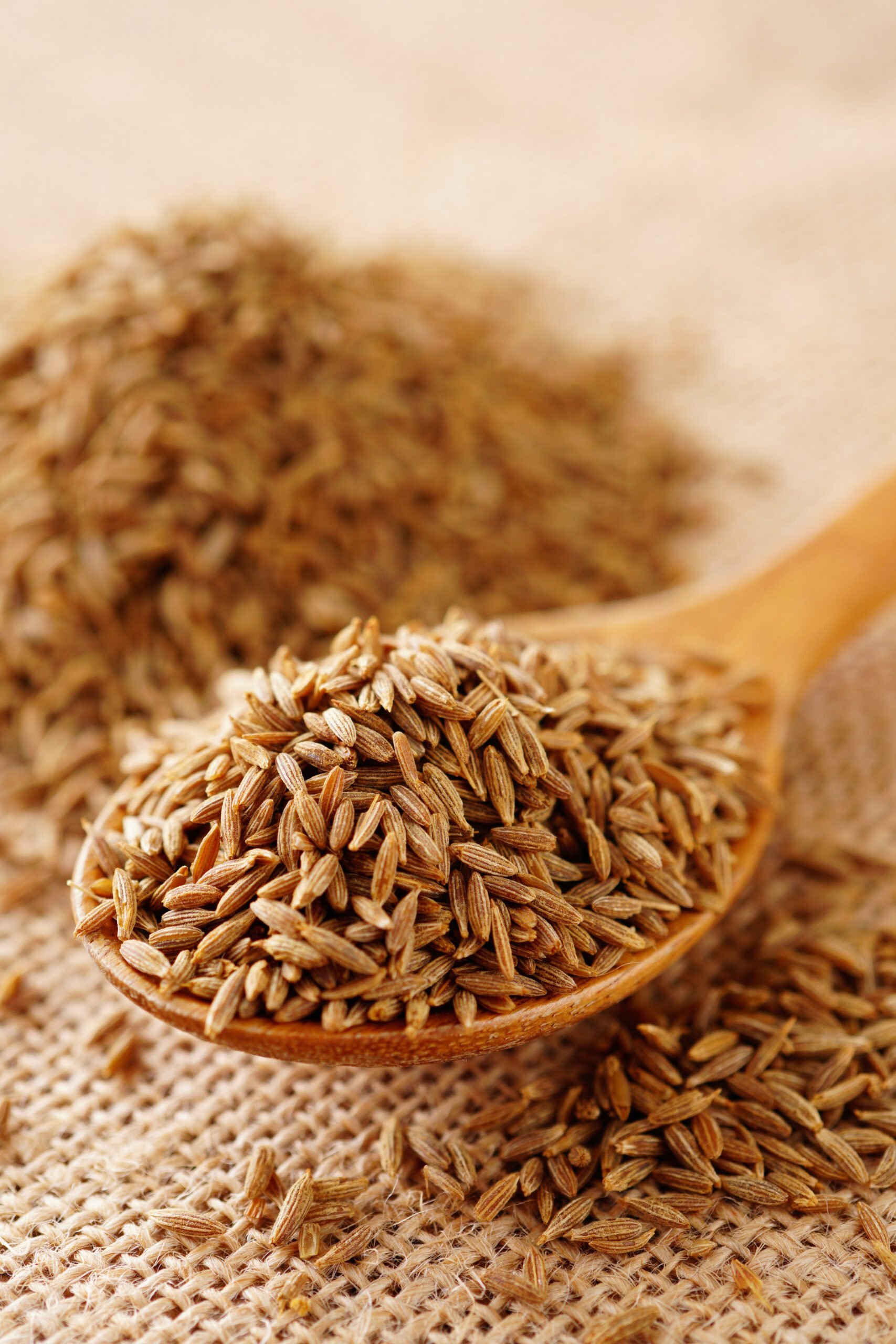
Open your spice cabinet, and there it cumin is tucked between the chili powder and the cinnamon. You may not reach for it every day, but when you do, cumin never disappoints. Just a pinch brings a warm, earthy kick that makes food taste fuller, deeper, and somehow more complete.
It’s been around for centuries, finding its way into kitchens across South Asia and beyond—blending into taco fillings, Middle Eastern stews, North African sauces, and countless family meals.
Here we are going to give cumin the attention it rarely asks for but actually deserves - what it is, how it tastes, where it’s used and how to make it shine in your cooking.
What Actually Is Cumin?
Cumin comes from the dried seeds of a plant named Cuminum cyminum in the parsley family. The seeds are small, boat-shaped, and usually light brown—though black cumin exists too, which has a different flavor.
It’s been used for thousands of years—not just in cooking, but in medicine and even mummification (thanks, ancient Egypt).
Quick Facts About Cumin Seeds
- What it is: Dried seeds of the cumin plant (Cuminum cyminum), part of the parsley family
- Flavor: Warm, earthy, slightly peppery with a hint of citrus
- Best in: Curries, dals, rice, breads, spice blends, and Mexican or Middle Eastern dishes
- Forms: Whole seeds (often toasted) or ground powder
- Storage: Store in an airtight jar, cool and dark; whole seeds keep longer than ground
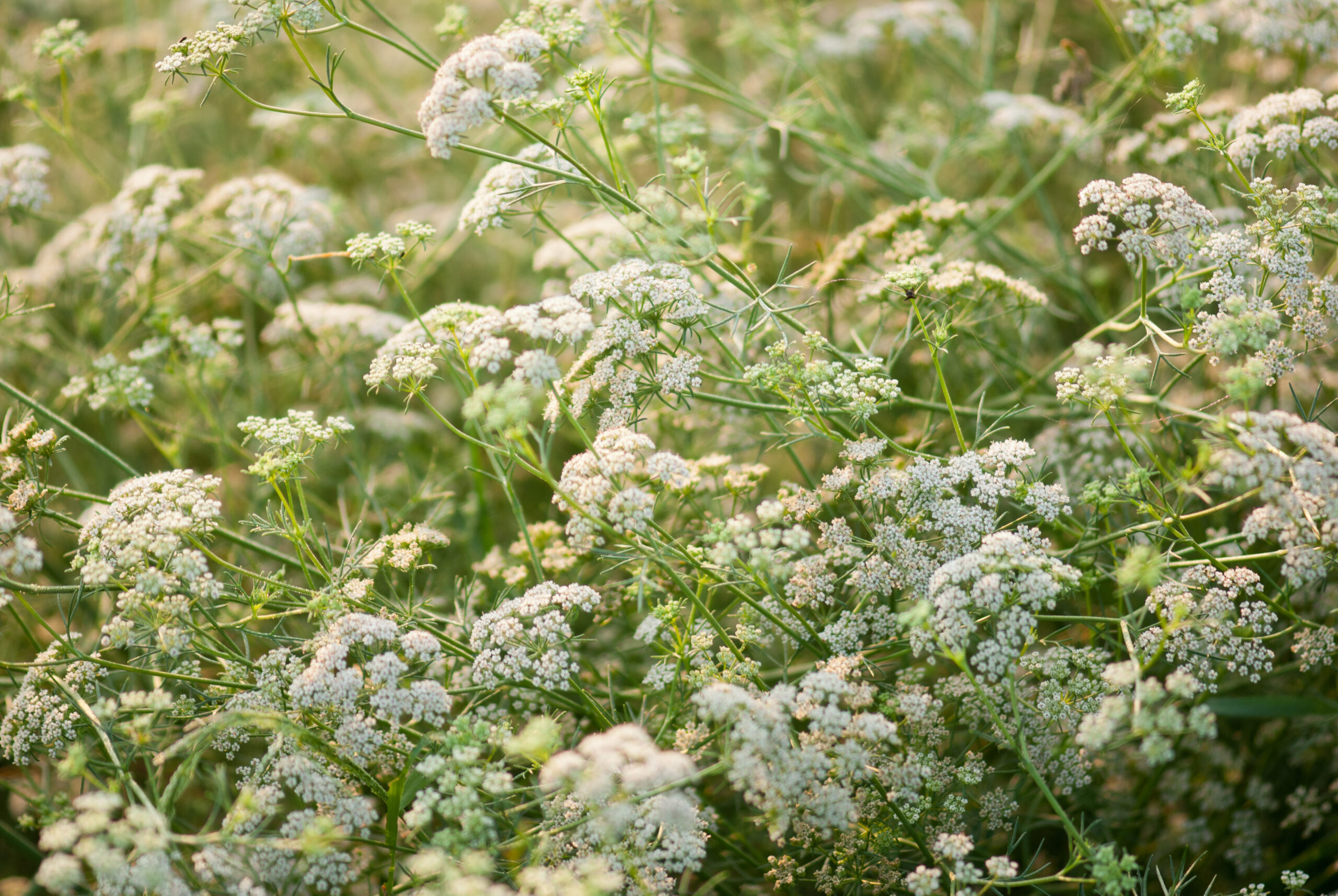
The cumin plant (Cuminum cyminum)—a delicate herb with feathery leaves and small white or pink flowers. Its dried seeds are what we use as the spice. Most of the cumin you’ll find in stores comes from countries like India, Iran, Turkey, or Syria.
Cumin vs. Caraway: They Look Alike, But They’re Not Twins
Don’t mix cumin with caraway seeds. They look similar, both are small, brown seeds with ridges—but their flavors are totally different. Cumin is warm, earthy, and slightly bitter, while caraway tastes sweeter, with hints of anise and mint.
They're not interchangeable in cooking. Cumin fits best in savory, spiced dishes. Caraway shows up in breads, sauerkraut, and some European recipes. So, double-check your spice jar—using the wrong one can really throw off your recipe.
What It Tastes Like
Cumin has a warm, earthy flavor with a slightly nutty and peppery edge. Some people say it’s a bit like dried lemon or has a mild smoky flavor—especially when toasted.
It’s not spicy like chili or sweet like cinnamon—it sits right in the middle, adding depth and richness without overpowering everything else. It’s the kind of flavor that makes soups feel fuller, meats taste bolder, and vegetables more satisfying.
The real magic happens when you toast cumin seeds in a dry pan or bloom ground cumin in hot oil. That’s when the aroma deepens, and the taste turns more intense and rounded.
Recipes with Cumin
Here are a few ideas to explore how cumin brings depth and warmth to different dishes:
Cumin is one of those versatile spices that works in almost any kitchen, whether it’s adding a nutty aroma to a cooling lassi or giving depth to soups, chutneys, and pickles. These recipes show just how many ways you can use cumin to bring out rich, layered flavors.
Where It Pops Up
Cumin doesn’t belong to just one region—it’s truly a global spice. You’ll find it in dishes from Mexico to Morocco, India to Indonesia.
In Latin America
In Mexican cooking, cumin is a staple in chili, taco seasonings, refried beans, and slow-cooked meats. It adds that smoky, earthy depth that makes the flavors feel richer.
In the Middle East & North Africa
Cumin is used in spice blends like baharat and harissa, stirred into lentils, rice, and roasted vegetables. It balances out sharp ingredients like lemon or garlic and adds grounding warmth.
In South and Central Asia
Cumin is widely used in Indian, Pakistani, Nepali, and Sri Lankan cooking. It’s bloomed in hot oil to start curries, sprinkled into dals, blended into spice mixes like garam masala, or even stirred into yogurt.
In Southeast Asia
In regions like Indonesia and Malaysia, cumin appears in curry pastes and complex spice blends. It’s often combined with lemongrass, coriander, and turmeric to create bold, layered flavors.
In Europe
Though less common, cumin shows up in traditional dishes like German sausages, Dutch cheeses, and Eastern European breads. It brings a warm, slightly bitter contrast to fatty or tangy ingredients.
Whole vs Ground Cumin: When to Use What
Both forms of cumin have their place—but they’re not always interchangeable.
Whole cumin seeds are best when you want to release their flavor slowly. Toast them in a dry pan or sizzle them in hot oil to bring out their nutty aroma. This works great in rice, stews, or anything where you start with a spice base.
Ground cumin gives a quicker burst of flavor. It blends easily into soups, spice rubs, dips, and marinades. You don’t need much—just a small amount adds a warm, earthy backbone to the dish.
Quick tip:
If a recipe calls for one but you only have the other, you can swap—just use about half as much ground cumin for whole, or double the whole seeds if you're replacing ground. But the texture and aroma will be slightly different.
A Few Smart Ways to Cook with Cumin
Cumin isn’t complicated—but a few small tricks can bring out its best.
1. Toast it first.
Whether you’re using seeds or powder, toasting cumin in a dry pan for just 30–60 seconds brings out its deeper, nuttier notes. You’ll smell the difference right away.
2. Bloom it in oil.
In many Asian and Middle Eastern recipes, cumin seeds are sizzled in hot oil at the start. This flavors the oil itself, creating a base that lifts the entire dish.
3. Add it late—if it’s ground.
Ground cumin doesn’t need much time to release its flavor. Add it halfway through cooking or near the end so it doesn’t burn or lose its punch.
4. Mix it into blends.
Cumin works well in DIY spice rubs, taco seasonings, curry powders, and salad dressings. Pair it with coriander, paprika, chili powder, or garlic.
5. Try it outside the usual.
Sprinkle toasted cumin on roasted potatoes, popcorn, or even in scrambled eggs for a warm, savory twist.
Cumin’s Health Benefits
Cumin isn’t just tasty—it’s also packed with small but real health perks.
Helps with digestion
Cumin has been used for centuries to ease bloating and indigestion. It supports stomach enzymes that help break down food more smoothly (Source).
Rich in antioxidants
It contains natural compounds that fight off cell damage. That’s good news for your immune system and overall health (Source).
May help regulate blood sugar
Some studies suggest cumin may support balanced blood sugar levels, especially when eaten regularly in moderate amounts (Source).
Iron boost in a pinch
Just one teaspoon of ground cumin has about 1.4 mg of iron. That’s helpful if you’re trying to increase your intake through food (Source).
Traditional medicine favorite
In Ayurveda and other ancient systems, cumin is used to support gut health, reduce inflammation, and improve metabolism (Source).
Nutritional Value (1 teaspoon whole cumin seeds):
- Calories: 8
- Carbohydrates: 0.9 g
- Protein: 0.4 g
- Fat: 0.5 g
- Fiber: 0.2 g
- Iron: 1.4 mg (about 8% of daily value)
- Magnesium: 8 mg
- Manganese: 0.1 mg
- Calcium: 20 mg
Cumin for Soothing Sips
Cumin isn’t just for curries—it also works wonders in drinks. One of the simplest ways to try it is jeera water: just boil a teaspoon of cumin seeds in water, let it cool, and drink it first thing in the morning. It’s a go-to home remedy in many households for digestion and bloating.
You can also steep cumin with ginger, lemon, or mint for a DIY herbal tea. The flavor is earthy and warm—not sweet, but definitely soothing. Great for when your stomach needs a little extra support.
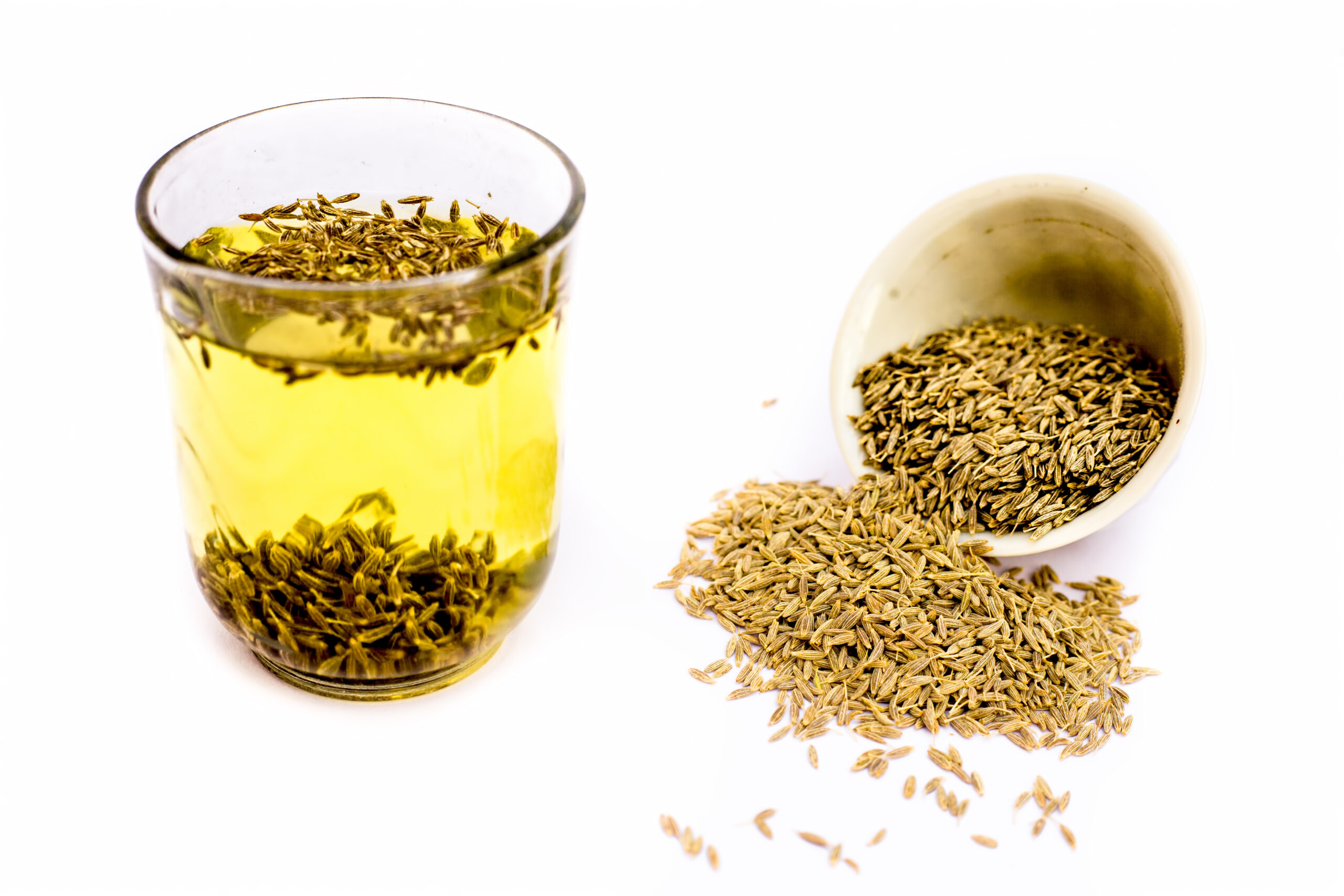
Warm, earthy, and calming—jeera water is cumin’s gentler side.
Quick Tips to Store and Use It Right
- Keep it airtight. Store cumin—whole or ground—in a sealed container, away from light and heat. A cool pantry works best.
- Buy whole if possible. Whole seeds last longer (up to a year or more) and keep their flavor better than ground cumin.
- Grind small batches. If you like fresh flavor, grind only what you need using a spice grinder or mortar and pestle.
- Smell it before using. If the aroma is weak or dusty, it’s probably lost its punch—time for a fresh batch.
Cumin Substitutes That Actually Work
Out of cumin? No worries—here are a few swaps that get you close:
1. Ground coriander
It’s milder and more citrusy, but works well in many of the same dishes, especially if cumin was just one of many spices.
2. Chili powder
Most blends include cumin already. This works if you're after that warm, smoky depth—just expect some heat too.
3. Caraway seeds
They look similar to cumin but taste different—slightly sweeter and more herbal. Still, they’re a decent stand-in in breads or stews.
4. Garam masala or curry powder
These blends usually contain cumin and can be used in small amounts when you need a quick flavor base.
Tip: If the recipe really centers around cumin (like cumin rice or spiced yogurt), it’s better to wait and restock. For background flavor, these swaps will do the trick.
A Few Cautions
Don’t go overboard.
Cumin is powerful. A little goes a long way, especially ground cumin. Too much can make your food taste bitter or overpowering.
Watch for pre-mixed spice blends.
Some store-bought blends with cumin may include added salt or preservatives. Always check the label—especially if you’re watching sodium or have food sensitivities.
A note for sensitive stomachs.
While cumin helps digestion for most, some people might find it too warming or spicy in large amounts. If you're trying it for the first time, start small.
Storage matters.
Old, stale cumin won’t just taste flat—it can dull your whole dish. If it smells weak or dusty, it’s time to refresh.
Final Thoughts: A Tiny Seed with Big Flavor
Cumin might be one of the smallest things in your spice rack, but its impact is anything but small. It can transform a bland dish into something warm, bold, and deeply satisfying.
Whether you’re tossing it into soup, sizzling it in oil, or blending it into your favorite spice rub, cumin brings comfort and character. And the best part? A little goes a long way.
So next time you reach for it, know you’re adding more than just flavor—you’re tapping into centuries of cooking wisdom, all packed into one tiny seed.
FAQs
Is cumin the same as caraway?
Nope. They look alike but taste very different. Cumin is earthy and warm, while caraway is sweeter and more herbal.
Can I eat cumin raw?
You can, but it tastes better toasted or cooked. Raw cumin seeds are bitter and hard to chew.
How much cumin should I use?
Start small—½ to 1 teaspoon is usually enough for most recipes. It builds flavor fast.
Is cumin spicy?
Not really. It’s warm and earthy, but it doesn’t bring heat like chili or black pepper.
Is cumin good for weight loss?
There’s no magic fix, but cumin may help with digestion and metabolism. Still, think of it as a helper—not a solution.
Learn More About Cumin
Wikipedia – Cumin
A detailed overview covering the history, botanical background, culinary uses, cultivation, and confusion with other spices, nutritional value etc.
Healthline – 9 Powerful Health Benefits of Cumin
A short engaging article explaining the health benefits of cumin seeds.



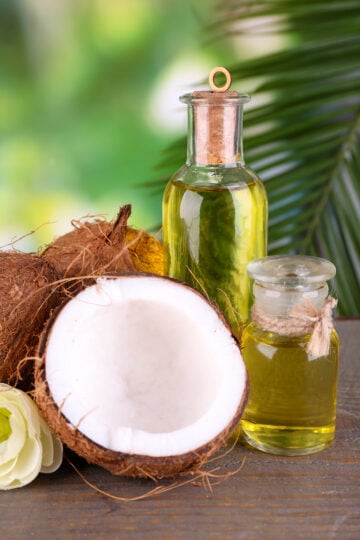
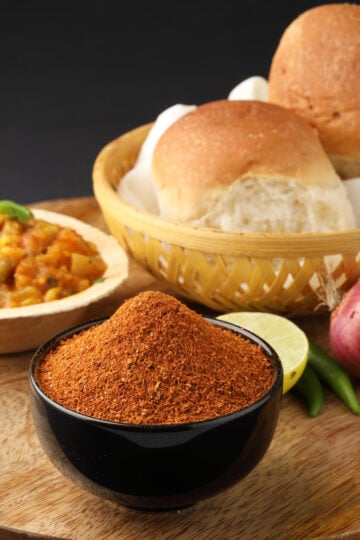
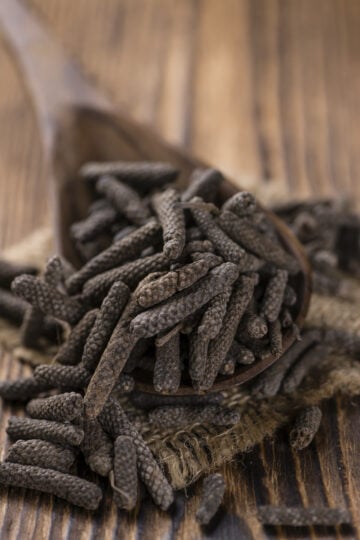
Have a question or something to share? Leave a comment below!